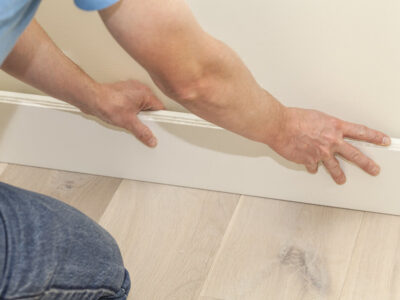
Introduction
Wicker furniture usually reminds you of the old days. They are strong and sturdy enough to last for years and that’s why they have a lot of memories attached to them. It’s also why you have a hard time getting rid of them even when they become dull and worn out. The next thing you know, you’re on the internet searching for “furniture repair near me” and hiring the services of a reputed professional. However, if you’re comfortable with tools, you can repair the furniture yourself. Let’s check out how you can restore your wicker furniture:
The Details
- Re-wrap the legs – A wicker furniture is very sturdy. However, over time the legs that bear the brunt of excessive weight may become unraveled. Fortunately, fixing it is easy. All you need is wicker caning, glue, water, time, and patience. You can easily get wicker caning at a nearby craft store.
Start by cutting the canning to the size you want. Make sure to leave a few extra inches since that makes working with the wicker easy. You can snip them off later. Next, you need to soak the caning in water for at least half an hour. This will make it flexible and easy to work with. Once the caning is soaked and bendable, it’s ready for use.
Use wood glue to dab under the old wrapping and cover it properly. Slip the new wrapping under the glued piece and use a small tack to keep it in place. Wrap the flexible soaked cane around the furniture leg till you cover the damaged region. Once the leg is covered, apply some more glue to the wrapping and secure it with a small tack.
Now you can snip off excess canning with a sharp pair of scissors. Leave the furniture and allow the glue to dry and make a strong bond. You also need to allow the furniture more time so that the wicker can dry and get sturdy. Once that’s done, you can paint or stain the new wrapping to match the rest of the furniture. After that, your wicker furniture would stay as good as new for several years.
- Re-weave the reed – With time the reed on the wicker furniture may be damaged. It may be on the back, in the seat, or on the arm. Regardless you’ll need a few tools for this one. Reed isn’t a thread. It’s much stronger and harder to manipulate. That’s why you’ll need a pair of needle-nose pliers or a hooked wire tool for this one. Otherwise, guiding the wire in and out is going to be painstakingly difficult.
Apart from tools, you’ll also need some replacement reed. Usually, they are sold in lengths of 3 feet or more. That should be more than enough to cover the damage. However, if the damage is extensive with several pieces of worn-out wicker, you may need to buy more.
The first step is to cut and remove the damaged reed. Use a wire cutter for this job. Scissors may not be sharp enough and don’t exert enough force to make a clean cut. You don’t want any wire strands. Make sure that you leave around an inch or two of the original reeds tucked neatly under the surface. You can even leave them a bit longer so that they stay secure.
Soak the new reed in water for half an hour to make it flexible. When the reed is easy to bend, you can take it out of the water. Next, you can weave the flexible and wet reed over and under the original reeds a few times to secure the new reed in place. Poke your finger into the weaved reed to test its stiffness. If it isn’t stiff enough, you need to weave it tighter with a few more over and under weaves.
Keep weaving till you cover the damaged area. As you weave the reed, you can use the wire tool or needle-nose pliers to pull and push the reed in and out of the weave pattern. After the damaged area is covered, tuck in the ends under intersecting pieces that are facing the other direction from the surface. Finally, snip off any excess reed and repeat this process over all the damaged wicker pieces.
- Staining or Painting – After you wrap the legs or weave the reed, you need to stain or paint the repaired areas to match the rest of the furniture. This is a delicate process, and the final finish of the wicker furniture depends on it.
When the glue and the wicker have dried completely, spray paint a thin layer on the repaired area to blend it with the surrounding wicker. Make sure that you spray thinly and even. However, matching the finish this way is really difficult. Some people like to repaint the whole furniture to get a unified look. After the paint dries off, you can use a can of clear acrylic to seal the painted area. This protects your furniture from the elements.
If your furniture isn’t painted, you need to stain the repaired area. The process is similar to painting. However, gauging the finish of the stain before it dries is extremely difficult. That’s why you may need to use more stains and apply them a few more times to blend the repaired region with the rest of the piece. Finally, you can seal the furniture piece with a can of clear acrylic paint.
When you repair the furniture by yourself, it’s not professionally finished, and the final product may not be of the same quality as the original wicker furniture. There may be a few loose spots as well. However, it’s better than damaged furniture and the piece doesn’t end up in the trash.
Conclusion
Wicker furniture restoration isn’t easy, to say the least. It takes time and patience and a lot of hard work. If it seems too hectic, you can search for “furniture repair near me” to hire pros and leave the job to them.











